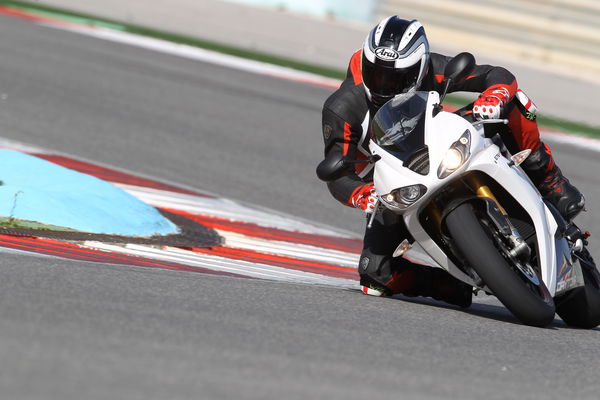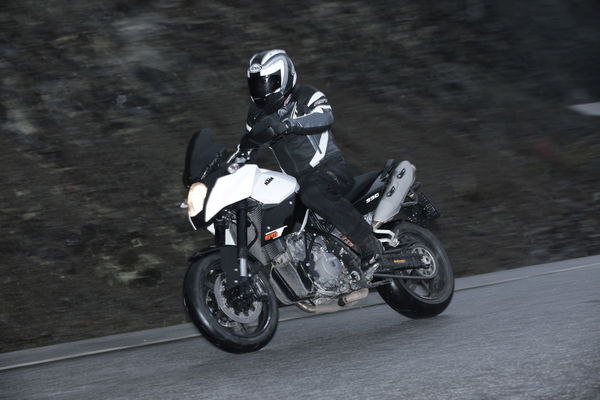First Ride: Triumph Daytona 675R review
Triumph adds a bit of spice to the already fairly potent Daytona 675 with the help of Öhlins and Brembo


ADDING Öhlins suspension to a bike has long been the quick-fix path to creating an uprated machine. Ducati, Aprilia and even Yamaha (remember the R1 SP?) have all slipped in some of the Swedish company’s finest bouncy bits into an existing model to create a higher spec version. And now, with the 675R, Triumph has joined the game.
For £9,799 (that’s £1,400 more than the stock bike) the R comes with Öhlins’ NIX30 forks (containing the same 30mm fork internal kit that Sam Lowes used to win the 2010 British Supersport title), a TTX36 shock (as used by most of the World and British Supersport grid) and an upgraded 18mm Brembo radial master cylinder with new Brembo monoblock calipers to match. That’s already a fairly potent sounding sporting package, now add to it a quickshifter, carbon mudguard, hugger, heat shield and fairing infill panels and a unique paint scheme with red sub-frame and a funky new ‘Triumph’ logo on the tank as well as re-styled engine covers and the 675R begins to look a bit more than just a tarted up Daytona. In fact Triumph are billing it as ‘the ultimate trackday tool.’ Is that just British bravado or does the 675R have the balls to back it up?
To prove the sporty potential Triumph launched the 675R at the Portimao Circuit in Portugal, a track notorious for its swoops and dips and corners that require serious front end confidence. First session underway and with the Pirelli Supercorsa SP tyres up to temperature I try and fathom out which direction the track goes in. Portimao is full of blind entry corners as well as several tight hairpins, the perfect combination to test out the Triumph’s front end security.
Steaming into the bends the level of feedback and assurance delivered by the forks and Pirelli tyres is impressive but a bit harsh and solid. After a few laps the ride feels unforgiving on the wrists. The addition of the Öhlins suspension hasn’t altered the bike’s geometry, however on returning to the pits it transpires that the Triumph test riders have firmed up the suspension from the stock road settings. Just about everyone who has ridden the first session asks for them to be put back to standard…
Next session out and with just two clicks less on the fork’s compression and rebound to put them to the stock settings (some lighter rider’s also softened the shock, I, err, didn’t find the need) the difference in the Triumph’s ride is remarkable. Usually the effect of a small adjustment like that to a roadbike’s suspension is pretty negligible, on the 675R the front instantly felt far more settled over bumps and the suspension started to work properly, allowing the 675R to track almost perfectly into corners and giving a feeling of total security from the front.
In isolation it’s hard to say how exactly much better or worse the Öhlins suspension is when compared to the stock bike’s units, but all I can say is that I don’t think I’ve felt quite the levels of confidence in a bike’s front end that I did on the 675R around Portimao. The harder you ride the better the feeling gets and even when you dive into a corner hard on the brakes the Pirelli seems glued to the track as the Öhlins forks glide over any undulations. And the feeling is the same from the shock.











